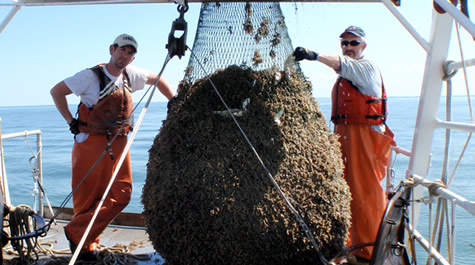What is ChesMMAP?
The Chesapeake Bay Multispecies Monitoring and Assessment Program, ChesMMAP, is currently funded by Wallop-Breaux funds from the Virginia Marine Resources Commission. ChesMMAP began in 2002 and was developed to assist in filling data gaps, and ultimately to support Bay-specific, stock-assessment modeling activities at both single and multispecies scales. ChesMMAP was designed to maximize the biological and ecological information collected for several recreationally, commercially, and ecologically important species in Chesapeake Bay.
The survey uses a large-mesh bottom trawl to sample juvenile-to-adult fishes from the head of Chesapeake bay at Poole's Island, MD to the mouth of the Bay just outside the Chesapeake Bay Bridge Tunnel. The Chesapeake Bay has been broken down into 5 regions of approximately 30 latitudinal minutes each. Within these 5 regions 80 samples sites are chosen for each cruise using a stratified random design.
The ChesMMAP Survey has several goals:
- To estimate population sizes for priority species
- To quantify geographic and seasonal distribution of these species
- To quantify major links in the Bay's food web by conducting stomach content analysis for all species sampled
- To define the seasonal length and age structure of the fish and elasmobranch populations by taking otolith (ear bone) or vertebrae samples from the individuals collected.






